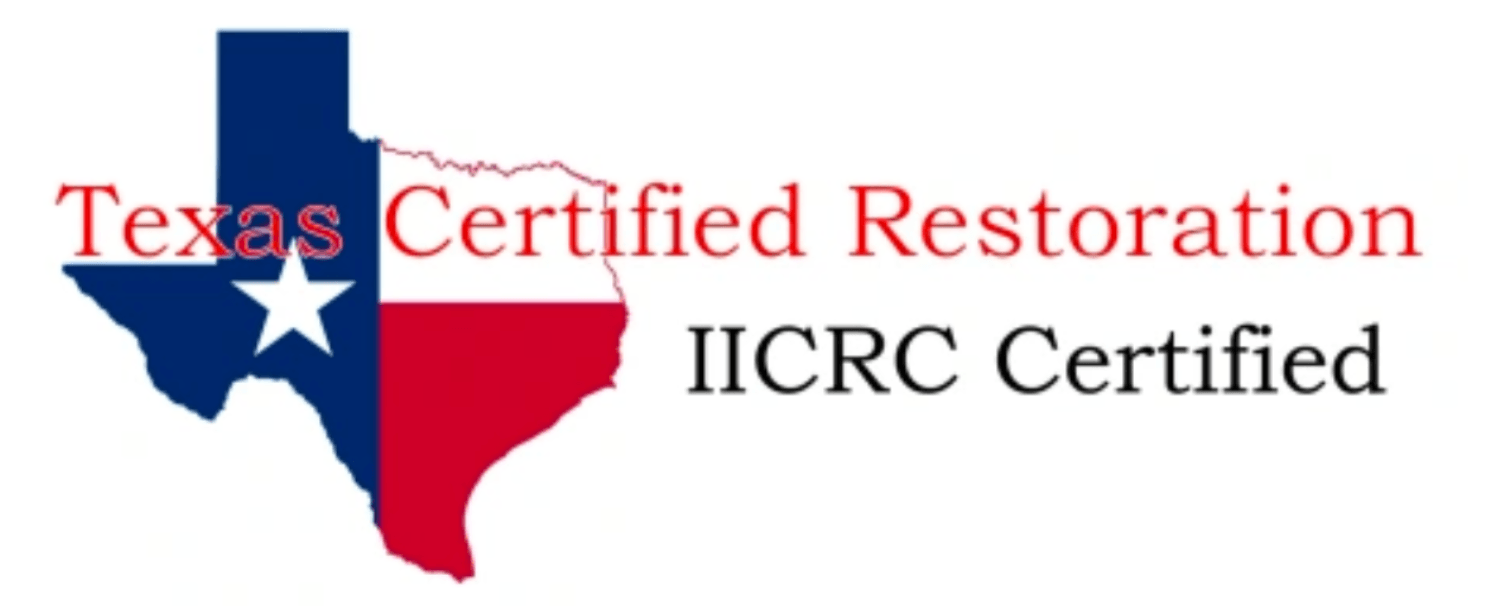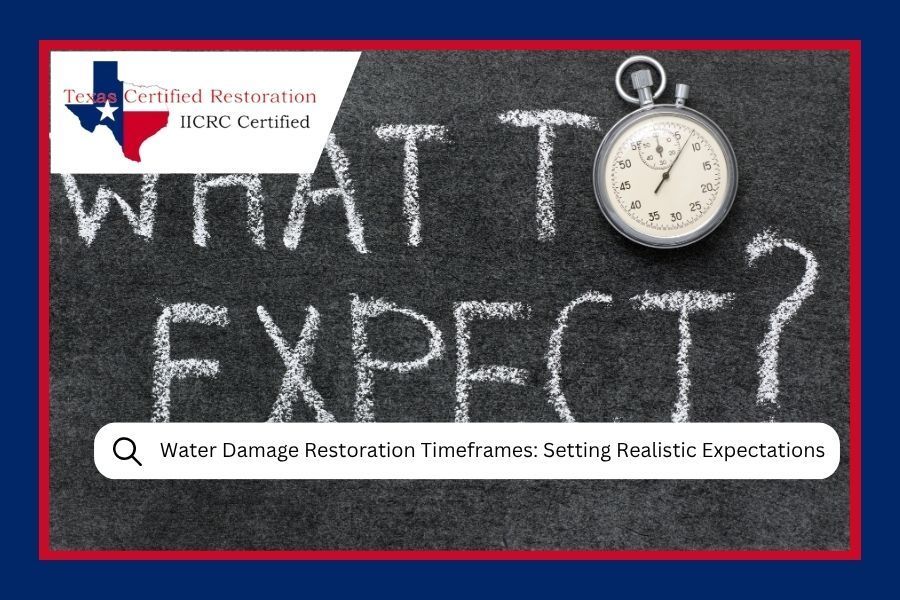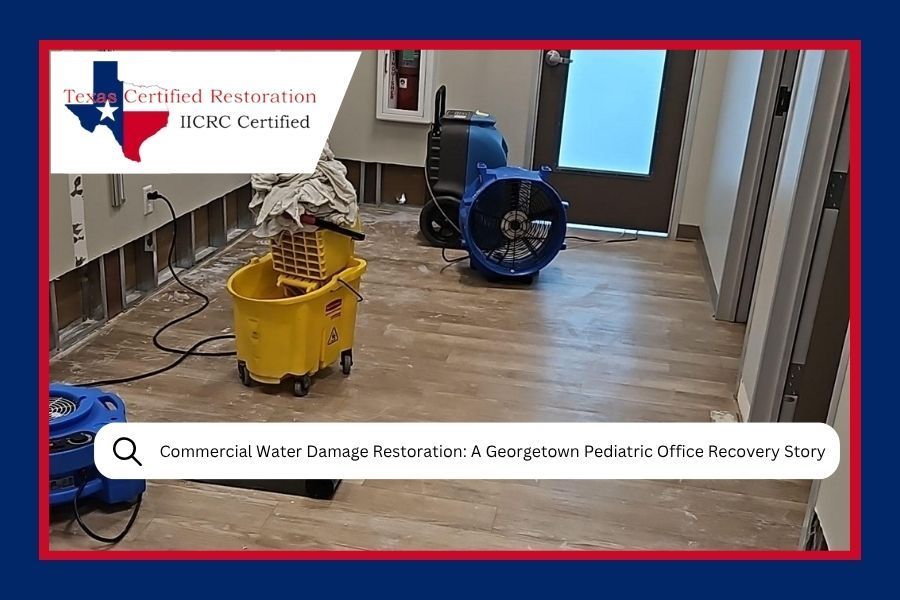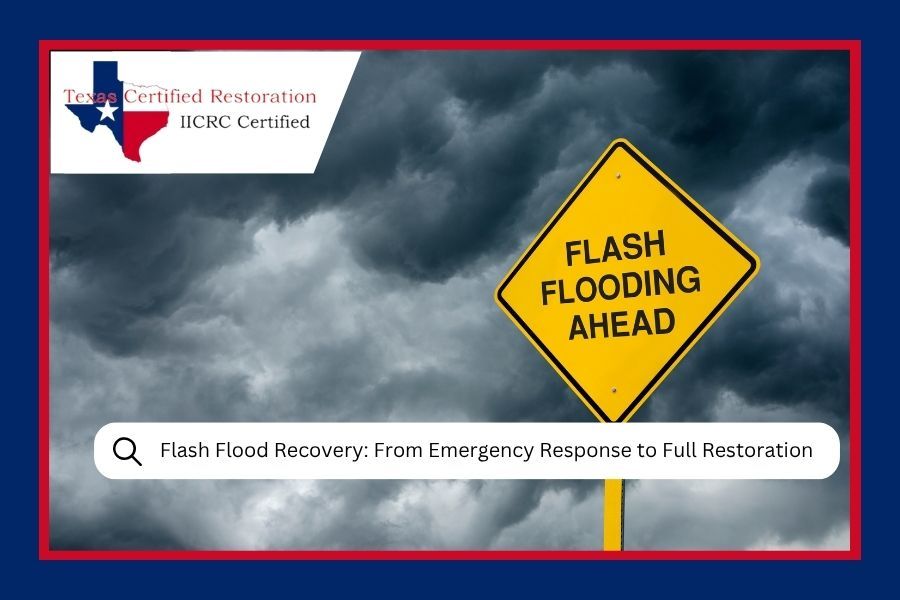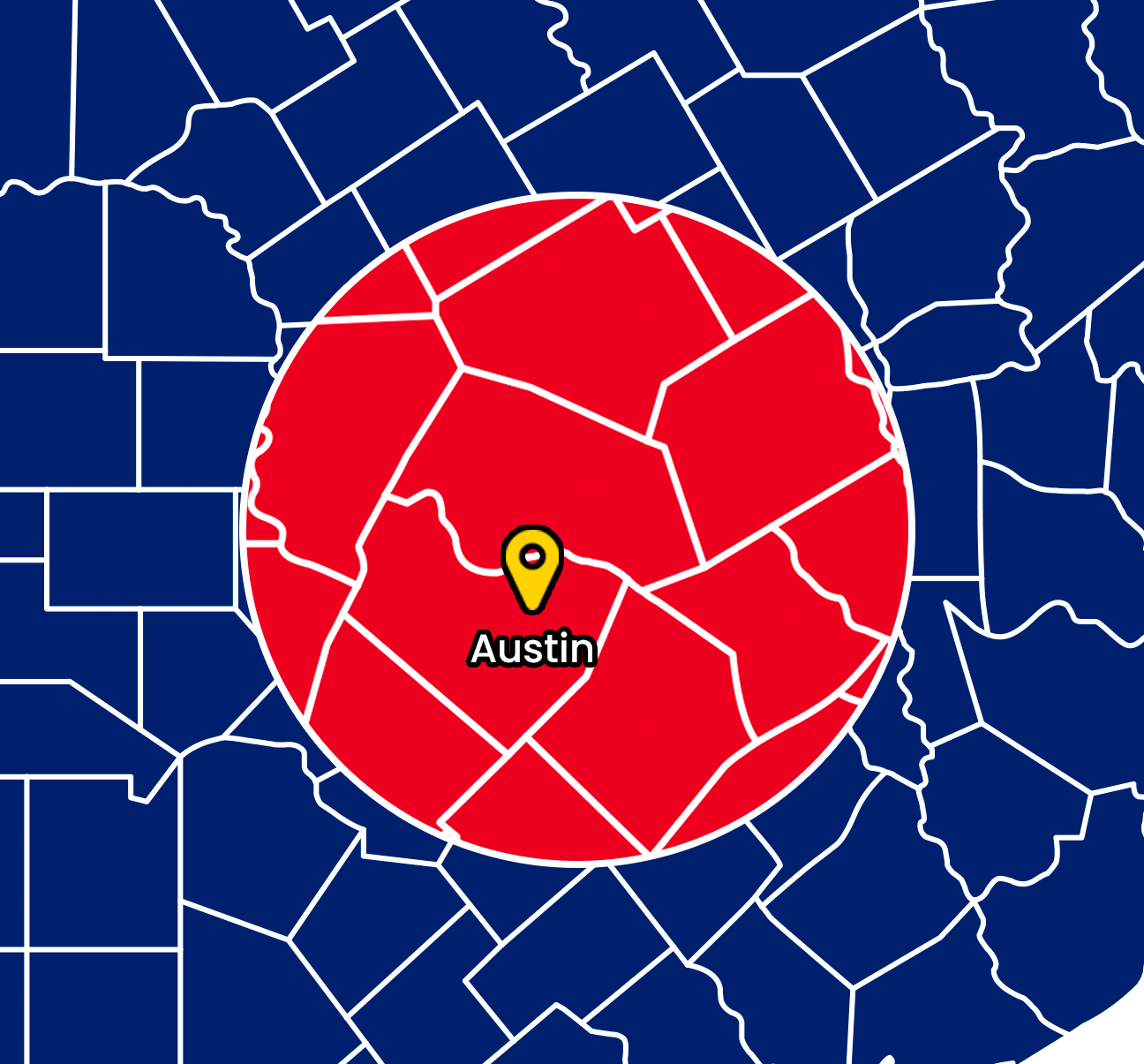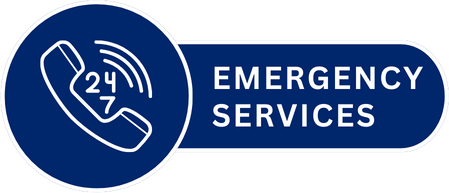
8 Overlooked Smoke Damage Signs After House Fires
Jump to Section:
- Hidden Discoloration in Unexpected Places
- HVAC System Contamination
- Electronics That Look Fine But Aren't
- Lingering Odors in Fabrics and Porous Materials
- Corroded Metal Surfaces and Hardware
- Damaged Window Seals and Glass Etching
- Compromised Insulation and Building Materials
- Health Symptoms That Point to Ongoing Exposure
- What to Do When You Spot These Signs
- Frequently Asked Questions
After a house fire, the visible damage is impossible to miss. Charred walls, melted belongings, and that overwhelming smell tell you immediately that something terrible happened. But here's the thing: some of the most serious smoke damage hides in plain sight, quietly wreaking havoc long after the flames are out. At Texas Certified Restoration, we've seen it all during our fire damage restoration work across the Greater Austin area, and we want to help you spot what others might miss.
Think smoke damage is just about bad smells and soot stains? Think again. Smoke is sneaky. It travels through your entire home, settling into places you'd never expect and causing problems that won't show up for weeks or even months. Whether you're dealing with the aftermath of a full house fire or a garage fire that spread , knowing what to look for can save you thousands in repairs and protect your family's health.
Let's walk through eight smoke damage signs that homeowners often overlook until it's too late.
Hidden Discoloration in Unexpected Places
Sure, the walls near the fire look bad. But have you checked inside your closets? Behind picture frames? Under area rugs?

Smoke damage often appears in unexpected places, leaving behind stubborn discoloration that worsens over time.
Smoke doesn't follow the rules. It seeps into every crack and crevice, leaving behind yellowish or brownish stains in the most unexpected spots. At Texas Certified Restoration, we've found discoloration inside kitchen cabinets that were nowhere near the fire, on the undersides of furniture, and even inside electrical outlets.
The smoke particles are acidic and continue to cause discoloration over time, meaning that faint yellow tint you barely notice today could become a dark, stubborn stain next month. Check everywhere, not just the obvious places.
HVAC System Contamination
Here's one that catches people off guard: your heating and cooling system just became a smoke distribution network.
When smoke enters your HVAC system, it doesn't just stay there. Every time your system kicks on, it circulates those particles throughout your entire home. We're talking about smoke residue coating your ductwork, filters, and vents, then spreading to rooms that were completely untouched by the fire.
Signs Your HVAC System Is Contaminated
🌫️ Persistent Smoky Smell
Notice smoke odor when your heating or cooling kicks on, even weeks after the fire
🔲 Visible Soot Around Vents
Black or gray residue visible around air registers and vent covers
📏 Dark Streaks on Walls
Discoloration patterns near vents where contaminated air is being pushed out
💨 Increased Dust
More dust settling throughout your home as particles circulate
👃 Temperature-Related Odors
Unusual smells that intensify when you adjust the thermostat
Professional smoke damage repair should always include a thorough HVAC inspection and cleaning. Otherwise, you're just redistributing the problem.
Electronics That Look Fine But Aren't
This one's a heartbreaker because it's not immediately obvious. Your TV, computer, and other electronics might turn on just fine after a fire, but smoke damage is already shortening their lifespan.
Smoke residue creates a conductive film on circuit boards and internal components. Over time, this causes corrosion and electrical shorts. We've seen homeowners lose expensive equipment months after a fire because they didn't realize the invisible damage that occurred.
If electronics were in your home during a fire, even in a different room, have them professionally inspected. The cost of inspection is nothing compared to replacing everything when it suddenly fails.
Don't Wait to Address Smoke Damage
The longer smoke residue sits in your home, the more permanent the damage becomes. At Texas Certified Restoration, we offer 24/7 emergency response to help Austin area homeowners start the recovery process immediately.
Get Help NowLingering Odors in Fabrics and Porous Materials
That smoky smell isn't just unpleasant. It's a sign that smoke particles are still embedded in your belongings, actively causing damage.
Fabrics, upholstery, carpets, drapes, and even books absorb smoke like a sponge. Simply airing things out or using air fresheners doesn't solve the problem. Those particles contain acids and chemicals that continue to degrade materials over time.
Professional cleaning uses specialized techniques to actually remove the particles, not just mask the smell. Don't assume something is clean just because you can't smell smoke anymore. If it was exposed to smoke, it needs professional treatment.
Corroded Metal Surfaces and Hardware
Walk around your home and look closely at metal fixtures, hinges, doorknobs, and other hardware. Notice any tarnishing, pitting, or discoloration?
Smoke residue is highly acidic and causes rapid corrosion on metal surfaces. At Texas Certified Restoration, we've seen brass fixtures turn completely black, chrome develop rust spots, and aluminum oxidize within weeks of a fire.
This isn't just cosmetic. Corroded hinges break, tarnished electrical contacts fail, and damaged fixtures become safety hazards. The National Fire Protection Association notes that smoke damage to metal components often requires complete replacement, not just cleaning.
Check these metal surfaces carefully:
- Door hinges and locks
- Cabinet hardware
- Light fixtures and switch plates
- Plumbing fixtures
- Window hardware
- Appliance surfaces
Damaged Window Seals and Glass Etching
Here's something most people never think to check: look closely at your windows, especially double-pane ones.
Heat and smoke can compromise window seals, leading to condensation between the panes. You might also notice a cloudy film or even etching on the glass itself from acidic smoke. Once window seals are damaged, you'll deal with ongoing condensation problems and reduced insulation efficiency.
This damage often doesn't show up immediately. You might not notice the compromised seals until the first cold morning when fog appears between your window panes.
Compromised Insulation and Building Materials
Smoke doesn't stop at visible surfaces. It penetrates deep into walls, attics, and crawl spaces, contaminating insulation and structural materials.
Insulation is particularly problematic because it's designed to trap air, which means it also traps smoke particles. We've pulled down perfectly intact-looking insulation only to find it completely saturated with smoke residue. Using contaminated insulation is like living with a slow-release smoke machine in your walls.
The same goes for porous building materials like drywall and wood framing. Even if they look okay on the surface, they may have absorbed enough smoke to require replacement. This is especially true for drywall, which is like a giant sponge for smoke particles.
Health Symptoms That Point to Ongoing Exposure
Sometimes your body tells you there's still a smoke damage problem before your eyes do.

Persistent headaches and respiratory issues can indicate continued exposure to smoke particles in your home.
Are family members experiencing new or worsening respiratory issues? Persistent headaches? Watery eyes or throat irritation? These symptoms can indicate continued exposure to smoke particles and combustion byproducts in your home.
According to the American Lung Association , smoke residue releases toxic particles and gases over time, especially as materials continue to off-gas. What seems like allergies or a cold might actually be your home making you sick.
Pay attention to:
- Respiratory symptoms that improve when you leave the house
- Persistent coughing or wheezing
- Eye irritation and excessive tearing
- Headaches that won't go away
- Worsening asthma or allergy symptoms
If multiple family members experience these issues after a fire, it's a strong sign that professional remediation is needed. Your health is worth more than trying to save money on cleanup.
What to Do When You Spot These Signs
Finding these overlooked smoke damage signs doesn't mean all hope is lost. It means you've caught problems before they became disasters.
Your immediate action checklist:
- Document everything with photos and detailed notes
- Contact your insurance company to report the damage
- Call a professional restoration company for a thorough assessment
- Avoid using affected items until they've been professionally cleaned
- Keep family members, especially those with respiratory sensitivities, away from heavily affected areas
- Don't try to clean electronics or delicate items yourself
At Texas Certified Restoration, we've helped countless Round Rock and Greater Austin homeowners navigate the complexities of fire damage restoration and recovery. We know it's overwhelming, but taking action quickly prevents minor issues from becoming major headaches.
Understanding what your insurance covers is also crucial to the recovery process. Many homeowners don't realize how comprehensive their fire damage coverage actually is.
| Type of Damage | Immediate Signs | Delayed Signs |
|---|---|---|
| Visible Surfaces | Soot, discoloration, charring | Worsening stains, yellowing over time |
| HVAC System | Smoky smell when running | Persistent odor, spreading contamination |
| Electronics | May appear normal | Corrosion, shorts, failure after weeks or months |
| Fabrics | Strong smoke odor | Material degradation, permanent discoloration |
| Metal Fixtures | Slight tarnishing | Deep corrosion, pitting, structural failure |
| Windows | Cloudy film on glass | Seal failure, condensation between panes |
| Hidden Materials | Often unnoticed | Contaminated insulation, off-gassing |
| Health Impact | Immediate irritation | Chronic respiratory issues, persistent symptoms |
The Bottom Line
Smoke damage is more complex and far-reaching than most people realize. Those eight signs we just covered represent real problems that won't fix themselves. The acidic nature of smoke residue means damage gets worse over time, not better.
If you've experienced a fire, don't wait until these problems become obvious. At Texas Certified Restoration, our certified professionals have over 10 years of combined experience identifying and addressing smoke damage that others miss. We're available 24/7 because we know disasters don't wait for business hours.
The sooner you address smoke damage, the more of your home and belongings you can save. Whether you're dealing with a recent fire or discovered these signs weeks later, reach out to us for a professional assessment. We're your neighbors here in the Austin area, and we're committed to helping you get your life back to normal.
Understanding your first 48 hours after a house fire can make all the difference in your recovery journey.
Frequently Asked Questions
How long after a fire can smoke damage continue to cause problems?
Smoke damage can cause ongoing problems for months or even years if not properly addressed. The acidic compounds in smoke residue continue to corrode metal, etch glass, and degrade materials over time. Smoke particles can also continue to off-gas, affecting indoor air quality long after the fire. This is why professional remediation is so important, even for fires that seemed relatively minor. The sooner you address smoke damage, the better your chances of preventing long-term issues.
Can I clean smoke damage myself, or do I need professional help?
While you can wipe down some surface soot, comprehensive smoke damage restoration requires professional equipment and expertise. Smoke particles penetrate deep into porous materials and HVAC systems where household cleaning can't reach. Professionals use thermal foggers, ozone treatments, specialized cleaning agents, and industrial air scrubbers to truly eliminate smoke contamination. Attempting DIY cleanup often leaves residue behind, which continues causing damage. For anything beyond minor surface cleaning, professional restoration is the safer, more effective choice.
Will my homeowners insurance cover hidden smoke damage discovered weeks after a fire?
Most homeowners insurance policies do cover smoke damage, including hidden damage discovered later, as long as it stems from the original fire incident. The key is documenting everything and reporting it promptly once discovered. Take photos, keep detailed notes, and contact your insurance company as soon as you identify new smoke-related damage. Working with a restoration company experienced in insurance claims can help ensure you receive the coverage you're entitled to for both obvious and hidden smoke damage.
What's the difference between smoke damage from different types of fires?
Not all smoke damage is the same. Protein fires (from cooking) leave a nearly invisible but pungent residue. Synthetic material fires create thick, oily soot that's difficult to remove. Wood fires produce dry, powdery soot. Electrical fires can leave behind corrosive particles particularly harmful to electronics. The type of fire determines the cleaning approach needed. This is why professional assessment is so important, different smoke residues require different cleaning methods and solutions for effective removal.
